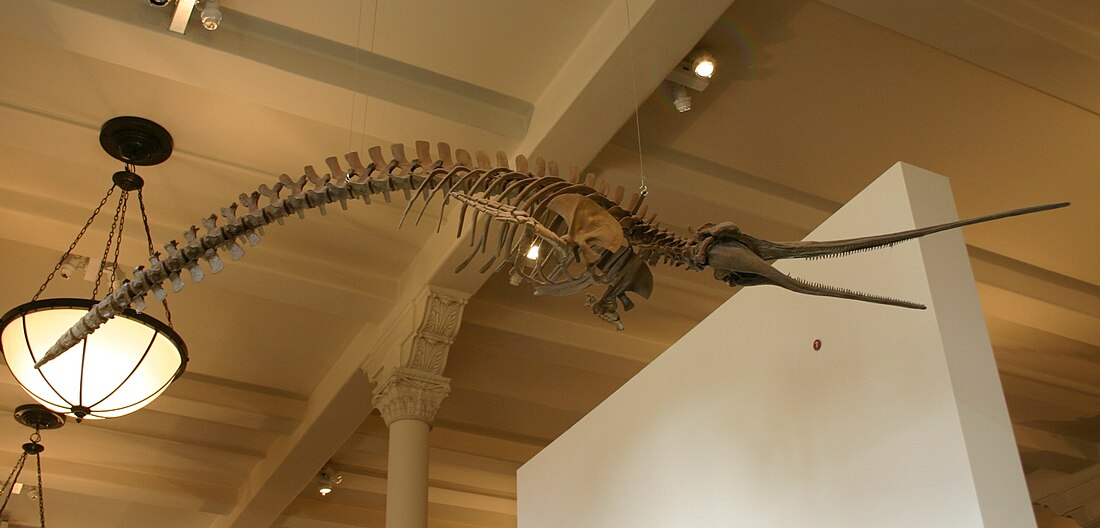Top Qs
Timeline
Chat
Perspective
Eurhinodelphis
Extinct genus of mammals From Wikipedia, the free encyclopedia
Remove ads
Eurhinodelphis ("well-nosed dolphin") is an extinct genus of Miocene cetacean. Its fossils have been found in Belgium, France, and Maryland.
Remove ads
Species
Currently-valid species are:[1]
- E. cocheuteuxi
- E. longirostris
Former species include:
- E. bossi, now a species of Xiphiacetus.
Description

Eurhinodelphis was around 2 metres (6.6 ft) in length. In most respects, it would have looked like a modern dolphin or porpoise, but its upper jaw was elongated into a sharp tip similar to that of a swordfish. Most likely, Eurhinodelphis used it in a similar manner to swordfish, hitting or stabbing prey. It also had long, sharp teeth.[2]
Compared with earlier fossil species, Eurhinodelphis had complex ears, suggesting that it already hunted by echolocation like modern whales. Its brain was also asymmetrical, a trait found in modern dolphins, and possibly associated with the complexities of navigating its environment.[2]
Remove ads
History
Eurhinodelphis was first described by B. Du Bus in a paper read before the Royal Academy of Sciences of Belgium on 17 December 1867. O. Abel studied and illustrated the European species in a series of articles published in 1901, 1902 and 1905; subsequently, fossil skulls found in the Calvert Formation in Maryland and Virginia could be attributed to this genus.
References
External links
Wikiwand - on
Seamless Wikipedia browsing. On steroids.
Remove ads

